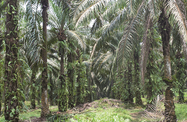Concerns in Sarawak over a short-term decline in the price of crude palm oil (CPO), exacerbated by an increase in local production, are being eased by the prospects of CPO being used in national and international biofuel initiatives. However, doubts have been raised over the impact the programmes will have on the region’s vital CPO industry.
Malaysian firm Affin Research wrote in August that the CPO price was under pressure due to higher production and a fall in exports, with 17.8% month-on-month growth in Sarawak’s output contributing to stocks rising 6.1% nationwide in the same period.
“The higher CPO production, together with a 2.3% month-on-month decline in exports and lower domestic consumption, contributed to a slight increase in closing stocks from 1.66m tonnes in June 2013 to 1.68m tonnes in July 2014,” the firm said, quoted in local media.
Economic pillar
The warning came as other monitoring firms were bearish on CPO prices as stockpiles rose during the summer harvest period. “We reiterate a ‘neutral’ call on the sector, with…our calendar year 2014-15 average CPO price forecast of RM2500 ($790) per metric tonne unchanged,” wrote Kenanga Research in August.
The firm said it expected August’s inventory to increase by 5% to 1.77m tonnes, while adding: “ample production of competing soyabean oil is limiting CPO prices’ upside”.
Palm oil is a pillar of Sarawak’s economic growth, with energy resources and timber its two other major exports. CPO exports were worth some RM40.1bn ($12.65bn) from 2007 until June 2013, and the Land Development Ministry reported in May that, as of December 31, 2013, the area planted with palm oil in Sarawak had increased to 1.2m ha. This compares with approximately 4m ha in Malaysia including Sabah and excluding Sarawak.
Biodiesel initiatives
Given the pivotal nature of CPO’s contribution to the economy, observers are looking beyond short-term pricing concerns to major biofuel initiatives that are expected to restore confidence in Sarawak’s CPO industry. First, there is the Malaysian government’s B5 biodiesel programme, under which diesel must contain 5% of palm oil or palm methyl ester (PME). The PME requirement for the entire B5 programme is estimated at 500,000 tonnes per year. Meanwhile, neighbouring Indonesia has implemented a mandatory 10% CPO-based biofuel blend into diesel.
This will likely increase the CPO price per tonne, which would translate into significant contributions to producers’ earnings. Major CPO producers told local press that a rise of RM100 ($31.5) per tonne in the CPO price would result in an addition of between RM100m ($31.5m) and RM250m ($79m) to their profits.
Implementation delays
Prospects of weakening prices have put pressure on the timing of the B5 programme, and Kuala Lumpur announced in August it would delay the nationwide implementation mandate until the end of the year.
Douglas Uggah Embas, plantation industries and commodities minister, told Bloomberg the change in timing was related to the construction of 15 blending facilities in Sabah, Sarawak and the federal territory of Labuan in East Malaysia taking longer than expected.
Upon full implementation of the B5 programme, monthly usage would average 41,667 tonnes compared with 20,833 tonnes now, according to Uggah. This is expected to further increase to 58,333 tonnes with the start of the B7 programme in the first quarter of 2015, which would introduce a higher biodiesel blend.
However, not all observers are convinced of the impact that the B5 programme will have on the CPO industry. The US Department of Agriculture’s Foreign Agricultural Service expects the impact on CPO prices would be “negligible”, according to a report produced in March.
Notwithstanding such concerns, the overall outlook for the CPO remains solid as Malaysia moves closer to meeting its biodiesel targets and other countries continue studying CPO’s potential in biofuels, adding new markets for the oil.
Follow Oxford Business Group on Facebook, Google+ and Twitter for all the latest Economic News Updates. Or register to receive updates via email.

